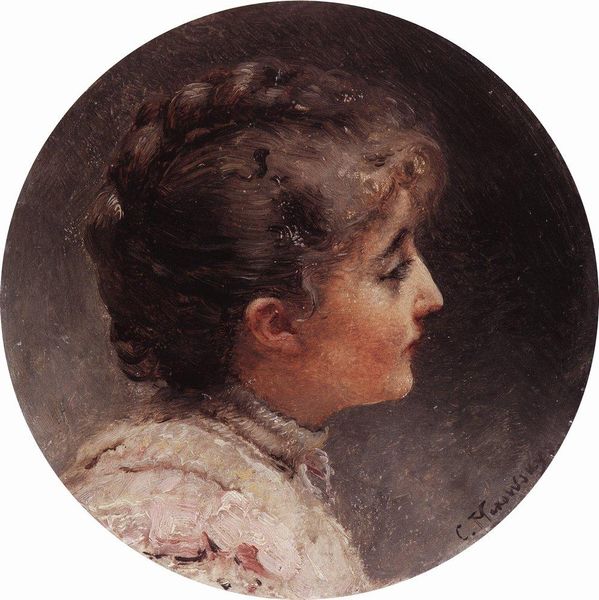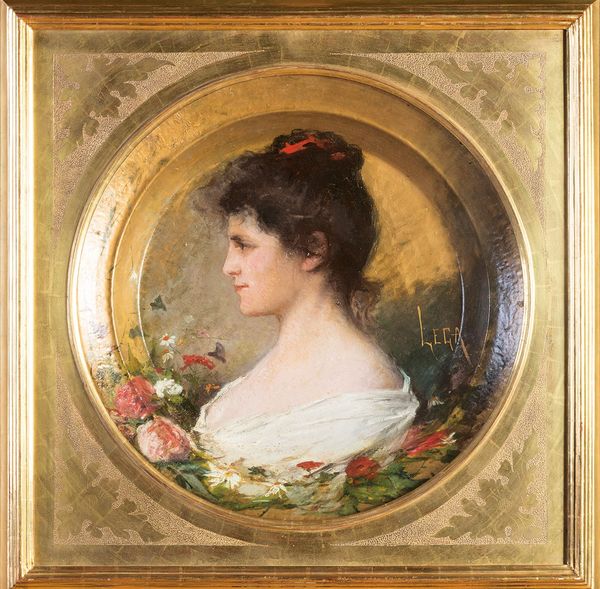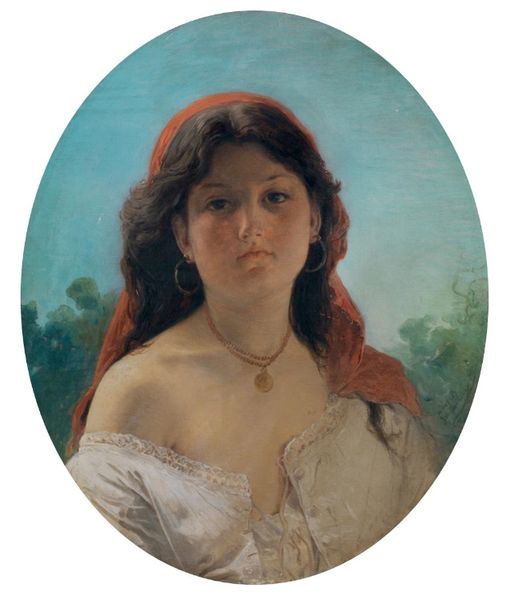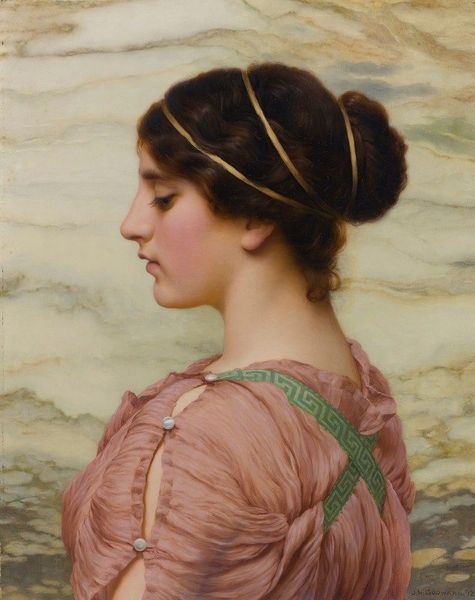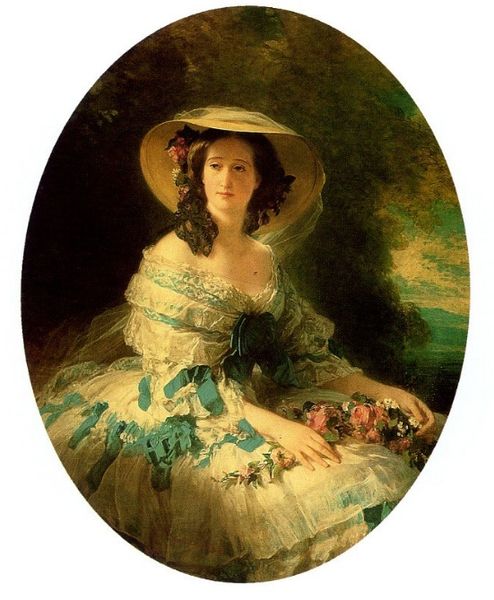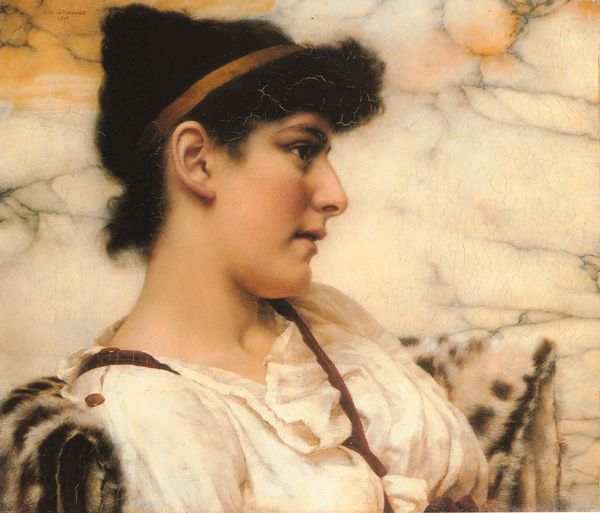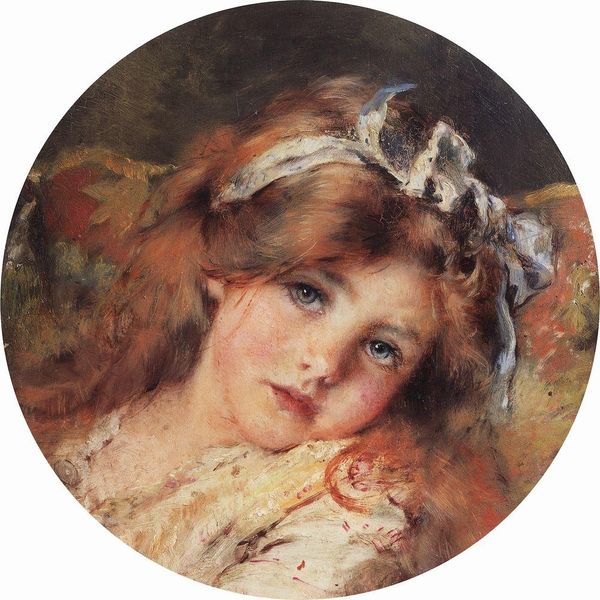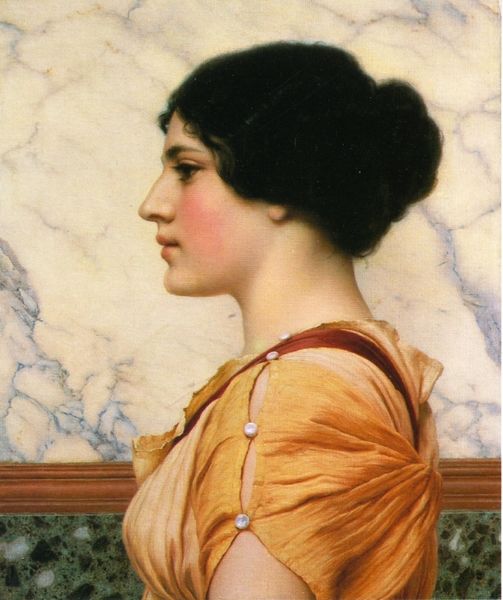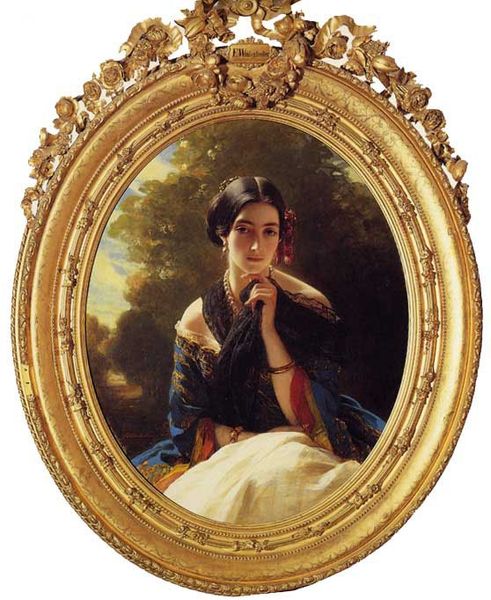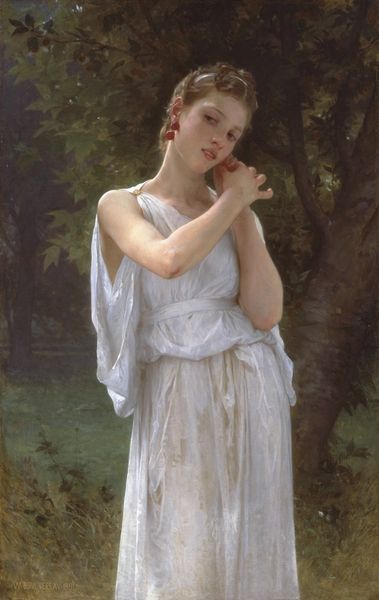
Dimensions: 25 x 1 cm
Copyright: Public domain
Editor: Silvestro Lega's "The Red Apron," painted in 1887, strikes me as an incredibly intimate portrait. It’s a small, round oil painting, and there’s a dreamy quality to the woman and her setting. What stands out to you about this work? Curator: The most striking element, to me, is that brilliant red apron – a clear symbol, contrasting with the muted tones of nature surrounding her. In many cultures, red signifies vitality, passion, even revolution. But observe how that strong color is softened, tied loosely, almost like a barrier rather than a binding. Editor: So, it's a symbol that’s been softened or perhaps complicated in some way? Curator: Precisely. Notice her downcast gaze, the lack of direct engagement. The red, usually a beacon, here seems to represent something she carries – a burden, a history, perhaps? Lega was part of the Macchiaioli group, known for painting outdoors, en plein air, capturing light and fleeting moments. Yet this portrait, with its strong, almost deliberate symbolism, feels quite different. Don't you agree? Editor: I see what you mean about that disconnect. It feels more staged, almost literary, than purely impressionistic. It's less about capturing a moment and more about conveying a state of mind. Curator: Exactly! The apron may even symbolize a traditional female role, one she both embraces and subtly resists, as conveyed in the pose. Does the artwork evoke any personal reflection? Editor: It reminds me how cultural symbols gain new resonance, or shift entirely, across time, with each person's experience. It’s not a simple read. Curator: I agree. The power of art resides in its capacity to evolve in dialogue with the viewer and the collective consciousness.
Comments
No comments
Be the first to comment and join the conversation on the ultimate creative platform.
